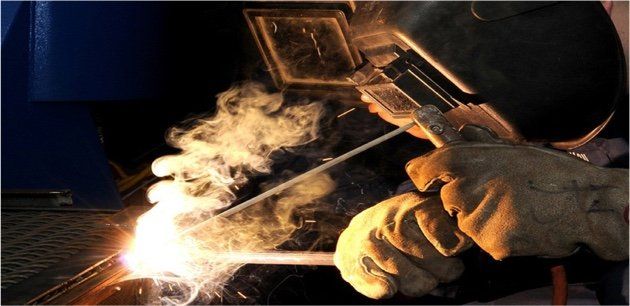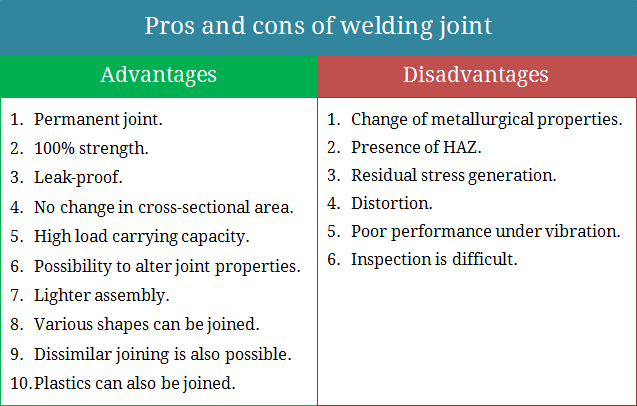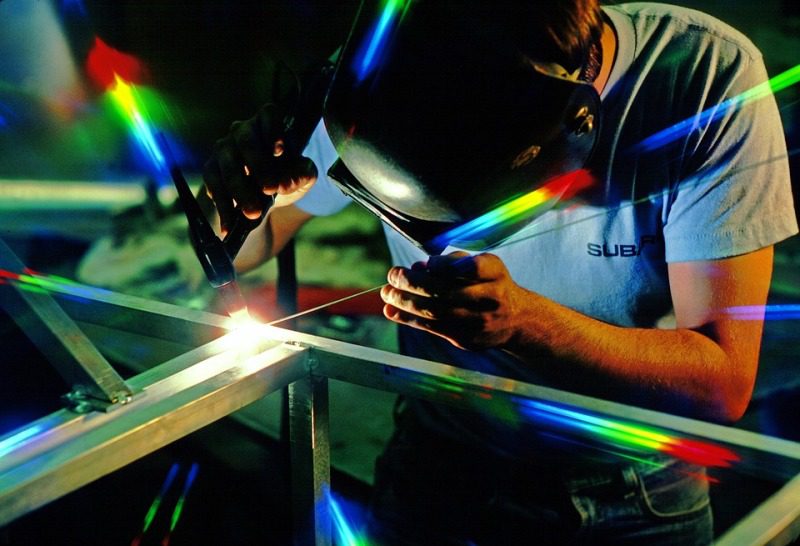Disadvantages of Being a Welder: Being a welder has its disadvantages, which include hazards associated with welding fumes, physical challenges of welding in confined or tight spaces, and the possibility of exposure to hazardous materials. Additionally, dismantling joined materials can be difficult, and welding requires skilled labor and a reliable source of electricity.
Despite these cons, the welding profession offers a variety of opportunities for those interested in the field. Welders can pursue different aspects of the profession, and there are various ways to become certified. Welding can also be financially rewarding, with the potential to make good-to-great money.
We will explore the advantages and disadvantages of being a welder in more detail to help you decide whether this career path is right for you.

Pros Of Being A Welder
Cons of being a welder include the potential health risks associated with welding fumes and hazards when performing the job without proper safety measures. Additionally, welding may require long hours, physical exertion, and working in uncomfortable conditions. However, welding can also offer various specializations, certification opportunities, and good earning potential.
Variety Of Career Paths
One of the major advantages of becoming a welder is the variety of career paths that are available within the profession. Welders can work in a range of industries, from construction and manufacturing to shipbuilding and aerospace.
They can also specialize in a particular type of welding such as MIG, TIG, or stick welding. This allows welders to explore different job roles and find the one that best suits their interests and strengths.
Different Ways To Become Certified
Another pro of being a welder is the various pathways to becoming certified. Welders can acquire their certification through a vocational school, trade school, or by completing an apprenticeship program. having multiple options for certification means that aspiring welders can choose a program that works best for their schedule, budget, and career goals.
Good Earning Potential
Welding also offers good earning potential – a very important factor for any career. Skilled welders can earn a good living wage, and in some cases, a six-figure income. With the increasing demand for skilled welders, opportunities for high-wage jobs are expected to grow, which means that there is plenty of potential for a welding career to be not just fulfilling but financially rewarding too.
While those are the advantages of being a welder, it’s important to also consider the disadvantages. Welding can be hazardous to one’s health, and it requires physical labor and manual dexterity. Welders also have to work in various weather conditions and potentially dangerous environments. However, with the right training, safety measures, and protective gear, one can mitigate these risks and enjoy a fulfilling, lucrative career.
Cons Of Being A Welder
Cons of being a welder include health risks, such as lung disease and skin and eye damage, as well as physical discomfort, like working in tight or harsh environments. Being a welder also requires skilled labor and long hours, with the potential for travel.
Welding is a skilled profession that is responsible for joining metal parts together using high heat. While this job offers its own set of rewards, it also comes with its fair share of disadvantages. Here are some of the primary cons of being a welder that you should be aware of:
Hazardous Working Conditions
Welding involves working in hazardous conditions that can be dangerous if proper safety regulations are not followed. Welders work with highly flammable gases and chemicals, making the risk of explosions, fires, and burns much higher. Additionally, welders often work in confined spaces, which increases the risk of suffocation and other serious injuries.
Physical Challenges
Welding is a physically demanding job that requires a lot of strength, stamina, and dexterity. Welders have to stand, bend, and crouch for extended periods while holding heavy equipment. The repetitive motion required for welding can also cause serious injury and strain on the body. Welders can experience back pain, neck pain, and even carpal tunnel syndrome if they are not careful.
Exposure To Hazardous Materials
Welders are regularly exposed to fumes and dust that are generated during the welding process, which can cause respiratory problems and other serious health issues. These fumes can contain hazardous substances like metal oxides, carbon monoxide, and ozone, which can lead to lung cancer, asthma, and other chronic diseases.
Overall, being a welder can be a rewarding career, but it is important to understand the risks and disadvantages associated with this profession. Nevertheless, with proper training, safety gear, and adherence to regulations, welders can minimize many of these risks and enjoy a long and successful career in welding.
Health Risks Associated With Welding
Welding is a hazardous profession that can be detrimental to a welder’s health. As the profession involves handling dangerous materials and gases, welders are at risk of developing both acute and chronic health problems, including occupational lung disease, skin issues, and eye problems.
Additionally, welding projects can require long hours in uncomfortable positions, making it physically challenging.
Acute And Chronic Health Risks
Welding is a hazardous activity that entails multiple risks to the welder. Acute and chronic health risks are among the most significant disadvantages of being a welder. Acute risks include electric shocks, burns, and eye injuries due to exposure to radiation and bright light emitted by the welding arc.
Chronic risks, on the other hand, include welding fume exposure and exposure to other hazardous fumes that can lead to respiratory problems, neurological damage, and other long-term health issues. Welders must take significant safety precautions to minimize their exposure to these risks and ensure they protect their health.
Lung Disease And Cancer
Prolonged exposure to welding fumes is a serious health hazard for welders. Welding fumes contain metals, gases, and other toxic substances that can deposit in the welder’s lungs, leading to various respiratory problems, including asthma, bronchitis, emphysema, and occupational lung diseases.
Long-term exposure to these fumes can also increase the risk of lung cancer, which is the most prevalent health risk for welders. Therefore, welders must wear appropriate respiratory protection, maintain good hygiene, and practice proper ventilation to minimize their risk of lung disease and cancer.
Asphyxiation Risk
Welding in confined spaces can lead to a significant risk of asphyxiation. Welding produces gases such as nitrogen, carbon dioxide, and argon, which can displace oxygen in the air.
Therefore, welders working in confined spaces must take significant precautions such as proper air monitoring, ventilation, and use of proper personal protective equipment such as respirators and air-supplying respirators. Failure to take these precautions can result in asphyxiation, which can be fatal.
In conclusion, being a welder has several disadvantages, including various health risks associated with welding. Acute and chronic health risks, lung disease and cancer, and asphyxiation risks are among the most significant health risks for welders. Therefore, welders must take significant precautions to minimize their exposure to these risks and protect their health.

Safety Concerns For Welders
Welding is a hazardous profession due to the risks of acute and chronic health issues associated with welding fume exposure, including lung cancer and organ damage. Welders also face physical challenges from working in confined spaces and the risk of burns and exposure to hazardous materials, making it an uncomfortable and challenging job.
Safety Concerns for Welders
Welders are exposed to a range of occupational hazards that can cause physical and health-related issues. Here are some of the significant safety concerns for welders:
Radiation Exposure
Welding produces radiation such as ultraviolet, visible light, and infrared rays. Prolonged exposure to UV radiation can cause skin burns and skin cancer. Welders who fail to wear protective gear while working may experience visual problems, including cataracts. Additionally, exposure to infrared radiation can cause heat stress and respiratory problems.
Burns
Welders work with hot metals that can cause burns. Burns are most common on the arms, face, and neck areas since welders typically work in an upright position. Severe burns can lead to permanent damage to tissues and, in some cases, death. Welders can avoid burns by using protective clothing, including welding jackets, gloves, aprons, and thick leather boots.
Eye Discomfort
Welders are exposed to bright light that can cause emotional discomfort. Prolonged exposure to bright light can result in flash burns, also known as Arc Eye. Arc Eye is a painful condition that is similar to having sand in the eyes. To prevent eye discomfort, welders should always wear eye protection when working with welding equipment, including helmets or shields.
In conclusion, the safety concerns for welders are real, as they face various hazards that can cause physical and health-related issues. Therefore, welders need to protect themselves by using protective gear, including welding jackets, gloves, aprons, and thick leather boots. They should also wear eye protection and be aware of the risks of radiation exposure and burns.

Frequently Asked Questions On What Are The Disadvantages Of Being A Welder
What Are Pros And Cons Of Being A Welder?
Pros of being a welder include earning good-to-great money, variety in the profession, and different ways to become certified. Cons include hazards and discomforts, long hours, and lots of traveling.
Welding requires skilled labor and electricity, and it can be physically challenging, with both acute and chronic health risks. It’s also difficult to dismantle welded material.
What Is The Disadvantage Of Welding?
The disadvantages of welding include health risks associated with welding fumes, such as occupational lung disease and eye and skin problems. Welding can also be hazardous if performed under inadequate safety guidelines. It requires skilled labor and access to a reliable electric supply.
Welders may have to work long, physically challenging hours, and there is a risk of asphyxiation when welding in confined spaces.
What Are Some Negative Things About Welding?
Welding poses health risks, including respiratory diseases and skin/eye irritation. It requires skilled labor, long hours, and working in tight spaces, hot or cold environments, and exposure to hazardous materials. The joining of materials makes it challenging to dismantle.
What Is Difficult About Being A Welder?
Being a welder can come with some challenges. Welding projects can be time-consuming and require a lot of precision. Working in confined or tight areas can also be physically demanding. Additionally, welding can pose some health risks, such as exposure to hazardous materials and radiation, making it important to follow safety guidelines.
But, on the positive side, welding offers a variety of career paths, different ways to become certified, and the potential to make good money.
What Are The Health Risks Of Welding?
Welding poses both acute and chronic health risks such as occupational lung disease, lung cancer, eye and skin damage, and asphyxiation when welding in confined spaces.
Conclusion
To sum up, while being a welder can offer a variety of benefits such as good earning potential and multiple paths for certification, there are also significant disadvantages to take into consideration. The job is not without risks and dangers, from acute physical risks to long-term occupational health concerns.
Additionally, welding can be physically demanding, with work often performed in tight or uncomfortable spaces. It’s important for those considering a career in this field to carefully weigh the pros and cons before making a decision.

